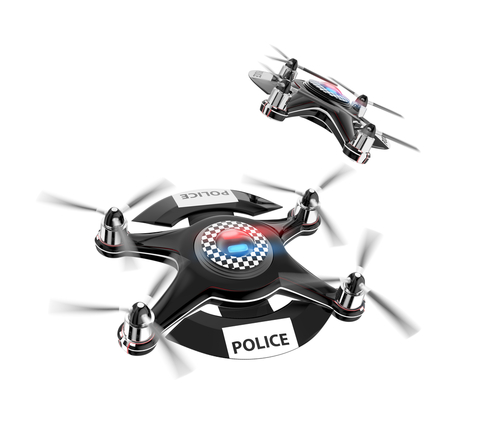
By: Patrick Sisson (MIT Technology Review)
In the skies above Chula Vista, California, where the police department runs a drone program 10 hours a day, seven days a week from four launch sites, it’s not uncommon to see an unmanned aerial vehicle darting across the sky. For officers on the force, tapping into this aerial reconnaissance resource has gone from a rare occurrence to a routine one. An officer about to enter a house where a potential suspect might ask “Is UAS available?” over the radio, and one of the department’s 29 drones—or “unmanned aerial systems”—could soon be hovering overhead. When the department needs to be slow and methodical, there’s almost always a drone involved, flying between 200 and 400 feet above the action. Most people wouldn’t realize it’s there.
Chula Vista uses these drones to extend the power of its workforce in a number of ways. Often, dispatchers need to make decisions about deploying officers. For example, if only one officer is available when two calls come in—one for an armed suspect and another for shoplifting—the officer will respond to the first one. But now, says Sergeant Anthony Molina, the Chula Vista Police Department’s public information officer, dispatchers can send a drone to surreptitiously trail the suspected shoplifter.
“The drone is never in danger,” he says. And neither is the officer controlling the drone, he adds. “They’re in a room.”
Drones aren’t new to police departments. More than 1,500 departments across the country now use them, mostly for search and rescue as well as to document crime scenes and chase suspects. Their use is limited, in a majority of cases, by the US Federal Aviation Administration, which requires that police departments fly drones only within operators’ line of sight. But starting in 2019, the agency began offering BVLOS (“beyond visual line of sight”) waivers, opening up the possibility of longer flights, remote operation, and more efficient and expansive fleets.
The FAA is widely expected to fully legalize BVLOS within the next few years, which would make it easier for other such programs to launch; the sheriff-elect in Las Vegas, Nevada, already announced plans to pre-position hundreds of drones citywide to respond rapidly to crimes and shootings. New technologies such as autonomous flying, where drones can fly pre-programmed routes or respond to commands without the need for human operators, aren’t far away.
“This is rapidly escalating,” says Matt Sloane, founder of Atlanta-based Skyfire Consulting, which helps train law enforcement agencies on the use of drones. “Police departments are steadily growing their budgets for this technology. I think we’ll see autonomous deployment within two to three years”…
Featured News
Big Tech Braces for Potential Changes Under a Second Trump Presidency
Nov 6, 2024 by
CPI
Trump’s Potential Shift in US Antitrust Policy Raises Questions for Big Tech and Mergers
Nov 6, 2024 by
CPI
EU Set to Fine Apple in First Major Enforcement of Digital Markets Act
Nov 5, 2024 by
CPI
Six Indicted in Federal Bid-Rigging Schemes Involving Government IT Contracts
Nov 5, 2024 by
CPI
Ireland Secures First €3 Billion Apple Tax Payment, Boosting Exchequer Funds
Nov 5, 2024 by
CPI
Antitrust Mix by CPI
Antitrust Chronicle® – Remedies Revisited
Oct 30, 2024 by
CPI
Fixing the Fix: Updating Policy on Merger Remedies
Oct 30, 2024 by
CPI
Methodology Matters: The 2017 FTC Remedies Study
Oct 30, 2024 by
CPI
U.S. v. AT&T: Five Lessons for Vertical Merger Enforcement
Oct 30, 2024 by
CPI
The Search for Antitrust Remedies in Tech Leads Beyond Antitrust
Oct 30, 2024 by
CPI